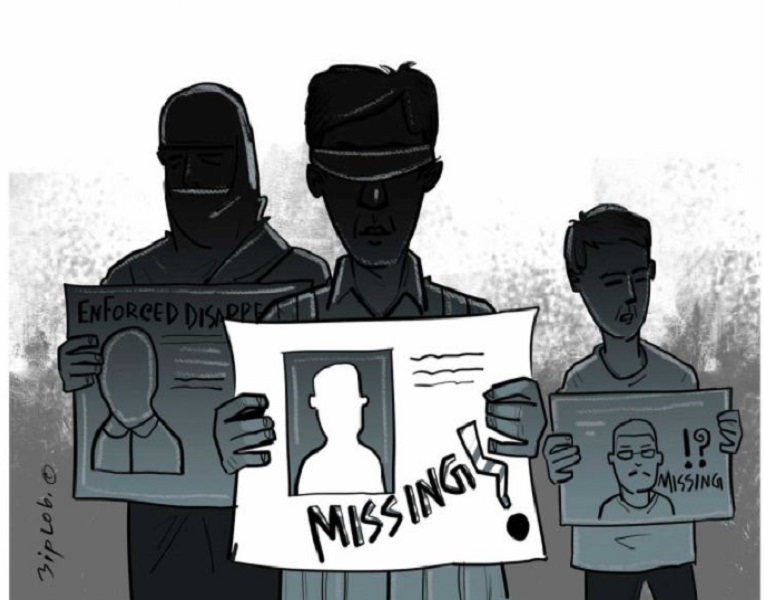
August 30th marks the International Day Of The Victims Of Enforced Disappearance. International law defines enforced disappearance as “the arrest, detention, abduction or any other form of deprivation of liberty by agents of the State or by persons or groups of persons acting with the authorization, support or acquiescence of the State, followed by a refusal to acknowledge the deprivation of liberty or by concealment of the fate or whereabouts of the disappeared person, which place such a person outside the protection of the law.”
In the Middle East and North Africa region, conflict, war, and political repression, as well as devastation, death, and homelessness, have led to the disappearance of a large number of people, including political and social activists. It is estimated that between 250,000 and one million Iraqis have vanished over the past fifty years due to political conflicts, war, and political repression.
At least 82,000 people have vanished in Syria since the country’s civil wars began in 2011. Of these, only 2,000 disappeared due to terrorist jihadist organizations, while the rest were victims of arbitrary arrest and detention operations and kidnapping by Syrian government agents. There is no information regarding their condition, probable location, or whether they are alive or dead.
In Egypt, between 2013 and January 2023, the Stop Enforced Disappearance Campaign documented that over 3,600 people were forcibly disappeared. The term “forced disappearance” first appeared in Egyptian media in 2003 to refer to the case of journalist Reda Helal, who disappeared in August of that year. It was suspected that he was detained by Egyptian security for criticizing President Hosni Mubarak; Helal’s fate remains unknown to this day.
In February 2023, a group of Egyptian human rights organizations demanded that the government stop forcible disappearances and that authorities carry out independent investigations into perpetrators.
After the revolution of 1979 and the ascension of the clerics to power in Iran, thousands of government opponents were detained, incarcerated, and put to death. Their families are still unsure of the fate of many of those detained. In the 1960s, thousands of individuals were victims of the Islamic Republic’s policy of enforced disappearance. The United Nations Working Group on Disappeared Persons has registered the names and files of at least 522 people who have been forcibly disappeared in the Islamic Republic of Iran; approximately 100 of these are women, but there is little information about them.
Forcible disappearance is used in the region by security forces as a tactic to silence opponents and activists and instill fear. The practice impacts not only those directly targeted but also the broader political and rights communities, as well as the families of the victims. Increasingly, these tactics are being used against women human rights defenders in the MENA region. Even in cases where male rights defenders and political activists have forcibly disappeared, mothers, daughters, wives, and sisters take up the task of following their cases, sometimes for years and decades. In this report, we take a cursory glance at the names and fates of some of those who have been forcibly disappeared in Syria, Iran, and Egypt.

